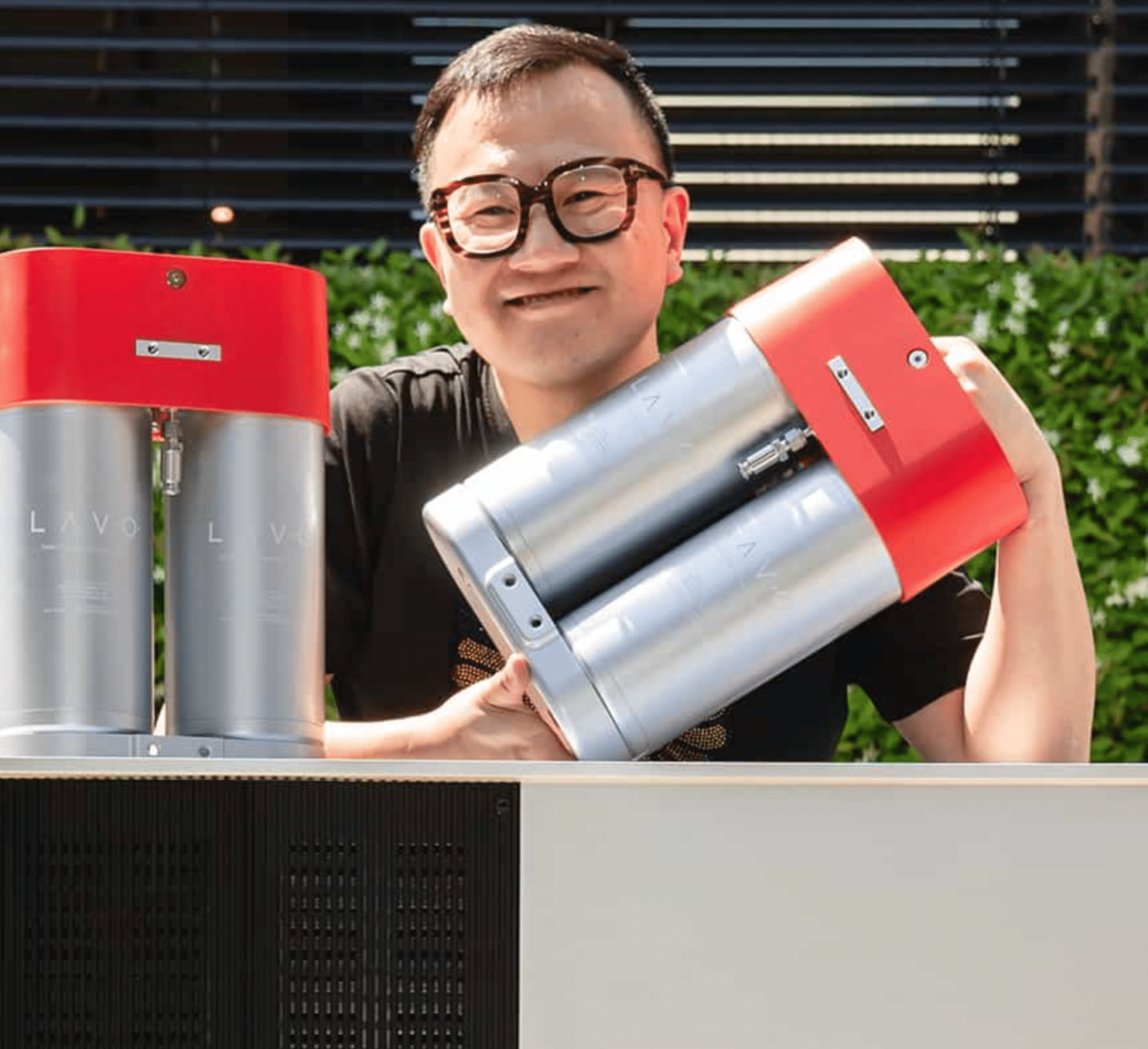From 1868 to 2006, the Gowings department store was a cornerstone of Sydney life. Last week, the investment company Gowing Bros, which has existed in parallel for much of that time, became a cornerstone investor in LAVO, an Australian “lifestyle company” that is developing domestic hydrogen energy-storage tech.
In partnership with the University of New South Wales’ hydrogen research facility, LAVO has produced the world’s first residential-commercial hydrogen battery. It stores 40 kWh of energy – three times the capacity of a Tesla Powerwall 2, at 13.5 kWh. And it has the potential to reshape how rooftop solar-generated energy is stored for use when the sun goes down, or when the grid grinds into blackout.
Alan Yu, CEO and executive director of LAVO, says that the system is “the culmination of decades of research.” Engineering and design specialist GHD, fuel-cell technologists Nedstack, and Australian industrial design consultancy D+I contributed to its development.
“Having Gowings on board is a huge vote of confidence in the work that we are doing,” said Yu.
Last year, LAVO’s energy storage mechanism was still being refined in the lab. In early 2021, it is available for use, in an attractively engineered unit.
LAVO has already secured orders from ventures such as an eco lodge and Gowing Bros, ahead of its official installation-ready date in June. As part of its investment in LAVO, Gowings has committed to purchasing 200 LAVO units, to be deployed at its various commercial properties, such as shopping centers.
“In addition to providing our retail tenants cost savings on energy across Gowings shopping centres, we see a major opportunity to become our own retailer of power at our residential developments through the use of LAVO technology to underpin an embedded network,” said John Gowing, managing director of Gowings.
The LAVO is about the size of a domestic fridge, with dimensions 1680 x 1240 x 400 mm, and weighing 324 kg. At installation, it is connected to a solar PV system via a (hybrid) inverter, and to mains water via a purification system. This will allow internal electrolyzers to convert excess energy into hydrogen, which it stores in four canisters.
To read the full story, please visit our pv magazine Australia website.
This content is protected by copyright and may not be reused. If you want to cooperate with us and would like to reuse some of our content, please contact: editors@pv-magazine.com.




Hi
Great. I want one!
You said “….the LAVO …. about the size of a domestic fridge …. will allow internal electrolyzers to convert excess energy into hydrogen, which it stores in four canisters.”
What exactly are these electrolyzers, are they fossil chemical dependent, what is their replacement cost, and what is the disposal cost when ‘spent’?
These are all important questions your article has missed.
Please expand in a follow up article urgently.
Thanks!
Cheers,
skris88
Could the gas be used for heating and cooling. Also will the cylinder pack be easy to remove and replace, making it possible to recharge several units and use them for automotive purpose?
I was wondering if this could be used to store hydrogen for use in a domestic central heating system to produce hydrogen in the summer for the winter heating in stead of an LPG system
And it’s only $35,000 , that will pay for it self in no time … 300-350 years.
$35,000 for 40 kwh storage? are you sure? (if so this is unfortunately D.O.A if quality high efficiency & safe LFP is now already below $200 kwh in high volume)
where do I buy shares